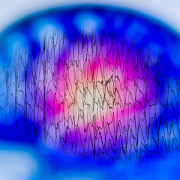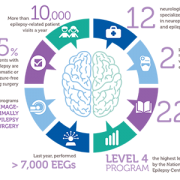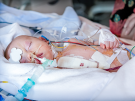Risk factors for pharmacoresistant pediatric epilepsy

New study evaluates risk factors for the timing and development of drug-resistant pediatric epilepsy.
Focal cortical dysplasia (FCD) is the most common cause of surgically-treatable epilepsy in children. In a new study published in Neurology, researchers evaluated 143 children with confirmed FCD risk factors for the timing and development of pharmacoresistant epilepsy.
What this means
The current definition of pharmacoresistance requires failure of two appropriately-dosed and selected antiseizure medications before being able to be considered for epilepsy surgery.
“We found that the failure of just one antiseizure medication is associated with an enormous increased incidence and earlier development of pharmacoresistance,” says Nathan Cohen, M.D., neurologist at Children’s National and lead author of the study. “Our data supports the redefinition of pharmacoresistant epilepsy to the failure of just one antiseizure medication in this population, which would potentially allow these patients to benefit from earlier curative surgery.”
Why it matters
The findings showed that in children with FCD the failure of just one antiseizure medication is associated with an enormous risk and earlier incidence of pharmacoresistance. Therefore, the authors advocate for its redefinition in FCD-related epilepsy to the failure of just one antiseizure medication.
“This will allow children to be considered much earlier for potentially curative epilepsy surgery,” adds Dr. Cohen. “We find that the majority of FCD patients develop epilepsy and that the majority of those with epilepsy develop pharmacoresistance.”
In a multivariate analysis, the authors show that the FCD cortical lobar location, pathologic subtype, and age of seizure onset are not important factors in the development of pharmacoresistance.
What’s next
This data supports operational re-definition of pharmacoresistance for surgical planning in FCD-related epilepsy to the failure of one antiseizure medication, and support early, potentially curative surgery to improve outcomes in this patient population.
You can read the full study, Prevalence and Risk Factors for Pharmacoresistance in Children With Focal Cortical Dysplasia–Related Epilepsy, in Neurology.











